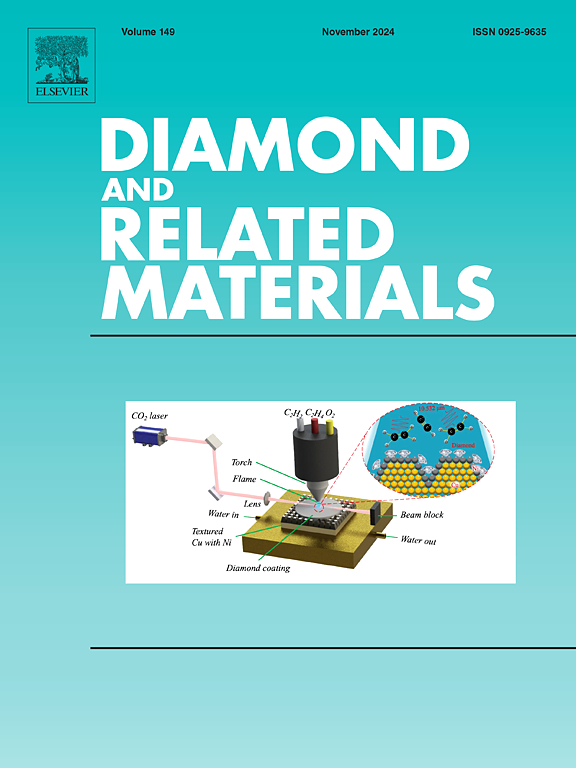一种用于骨移植部位感染预防和组织再生的新型GO-CS@ZnO复合材料
IF 5.1
3区 材料科学
Q2 MATERIALS SCIENCE, COATINGS & FILMS
引用次数: 0
摘要
由于术后感染的持续风险和移植物材料的生物相容性受损,骨移植缺损修复仍然是一个具有临床挑战性的问题。为了克服这些限制,我们开发了一种专门用于骨再生应用的新型氧化石墨烯-硅酸钙-氧化锌复合材料(GO-CS@ZnO)。采用水热法合成了该复合材料,并利用x射线衍射(XRD)、傅里叶变换红外光谱(FT-IR)、x射线光电子能谱(XPS)和扫描电镜(SEM)对其进行了系统表征。由于氧化石墨烯含有大量的亲水性基团,它们可以与水分子形成氢键。随后的水接触角试验证明该材料具有较强的亲水性。值得注意的是,经过严格的抗菌测试,该复合材料对大肠杆菌和金黄色葡萄球菌的抑制率均超过90%。随后72小时的体外细胞毒性评估证实了良好的生物相容性。这些共同的发现证明了GO-CS@ZnO复合材料作为骨缺损修复的创新生物材料的巨大潜力,提供了一种有希望的双重功能解决方案,同时解决了临床应用中的感染控制和生物相容性要求。本文章由计算机程序翻译,如有差异,请以英文原文为准。

A novel GO-CS@ZnO composite for bone graft site infection prevention and tissue regeneration
Bone graft defect repair remains a clinically challenging issue due to the persistent risk of postoperative infections and compromised biocompatibility in graft materials. To overcome these limitations, we developed a novel graphene oxide‑calcium silicate‑zinc oxide (GO-CS@ZnO) composite specifically designed for bone regeneration applications. The composite was synthesized through the hydrothermal method and systematically characterized using X-ray diffraction (XRD), Fourier-transform infrared spectroscopy (FT-IR), X-ray photoelectron spectroscopy (XPS), and scanning electron microscopy (SEM). Because GO contains a large number of hydrophilic groups, they can form hydrogen bonds with water molecules. Subsequently, the water contact angle test proved that this material has strong hydrophilicity. Remarkably, the composite demonstrated exceptional antibacterial efficacy with inhibition rates exceeding 90 % against both Escherichia coli and Staphylococcus aureus, as validated through rigorous antimicrobial testing. Subsequent in vitro cytotoxicity evaluations over a 72-h period confirmed excellent biocompatibility. These collective findings demonstrate the significant potential of the GO-CS@ZnO composite as an innovative biomaterial for bone defect repair, providing a promising dual-functional solution that simultaneously addresses infection control and biocompatibility requirements in clinical applications.
求助全文
通过发布文献求助,成功后即可免费获取论文全文。
去求助
来源期刊

Diamond and Related Materials
工程技术-材料科学:综合
CiteScore
6.00
自引率
14.60%
发文量
702
审稿时长
2.1 months
期刊介绍:
DRM is a leading international journal that publishes new fundamental and applied research on all forms of diamond, the integration of diamond with other advanced materials and development of technologies exploiting diamond. The synthesis, characterization and processing of single crystal diamond, polycrystalline films, nanodiamond powders and heterostructures with other advanced materials are encouraged topics for technical and review articles. In addition to diamond, the journal publishes manuscripts on the synthesis, characterization and application of other related materials including diamond-like carbons, carbon nanotubes, graphene, and boron and carbon nitrides. Articles are sought on the chemical functionalization of diamond and related materials as well as their use in electrochemistry, energy storage and conversion, chemical and biological sensing, imaging, thermal management, photonic and quantum applications, electron emission and electronic devices.
The International Conference on Diamond and Carbon Materials has evolved into the largest and most well attended forum in the field of diamond, providing a forum to showcase the latest results in the science and technology of diamond and other carbon materials such as carbon nanotubes, graphene, and diamond-like carbon. Run annually in association with Diamond and Related Materials the conference provides junior and established researchers the opportunity to exchange the latest results ranging from fundamental physical and chemical concepts to applied research focusing on the next generation carbon-based devices.
 求助内容:
求助内容: 应助结果提醒方式:
应助结果提醒方式:


